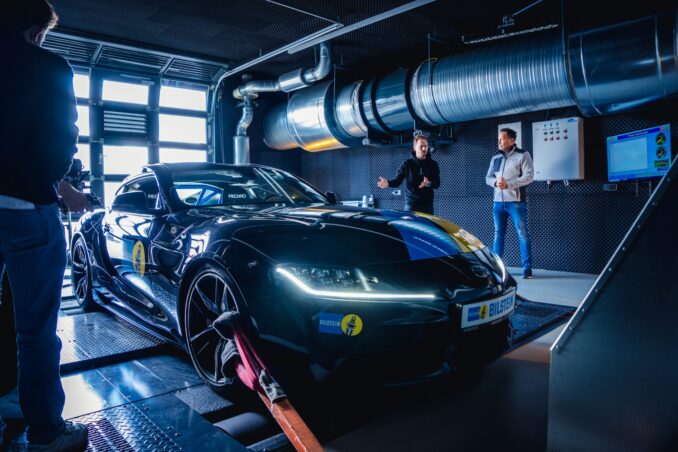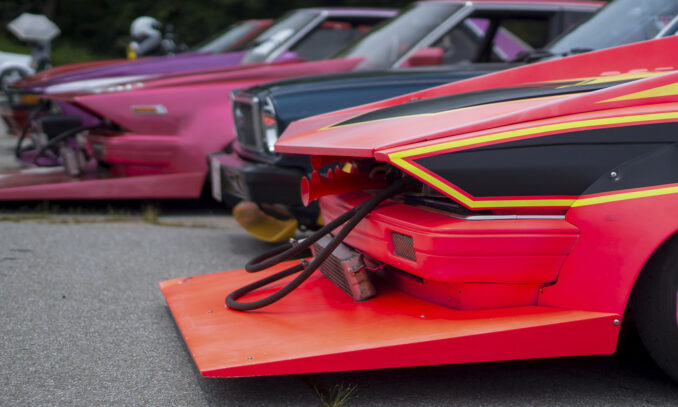There is a renown statement that goes: “Show me your car, and I’ll tell you who you are.” It reflects the true state of affairs perfectly. A vehicle can tell a lot about its owner, and car tuning serves well in helping reveal all the details. Remember that it refers to not only the automobile’s appearance but also to improving its performance.
If we consider tuning from a practical point of view, then its direct task is to improve a vehicle and make it more powerful, controllable, economical, and beautiful. With a closer look, another important goal appears aimed at distinguishing the car from the tons of others. It means that tuning is a kind of way of self-expression for the vehicle owner. Car styling allows adjusting the automobile to the tastes and requirements of the driver. So, let’s outline some essential details you need to know about car tuning.
Types of Car Tuning

Source:forbes.com
It’s usually possible to define several areas for improving and customizing the car, which include increasing engine power, modernizing the chassis, chip tuning, upgrading the interior, and changing the exterior.
In the first case, we are talking about improving the engine, which refers to replacing parts or the motor itself and installing additional systems, such as turbochargers and compressors. It’s also possible to equip a vehicle with a new exhaust system and use more efficient parts, including high quality spark plugs, water injection, etc.
Chassis customization involves the installation of more efficient shock absorbers, stiffer springs, or the replacement of stabilizer bars and suspension arms. Often, you can find a car equipped with a pneumatic or hydraulic suspension. Chassis tuning also includes the refinement of the brake system and the replacement of discs.
The field of chip tuning involves the replacement and reprogramming of the car’s control software in order to increase power and save fuel. It has a number of nuances and requires the intervention of a specialist. Therefore, it’s better to contact trusted companies and qualified professionals.
Cabin tuning includes hauling in various materials, replacing the dashboard, installing an audio system and additional lighting, or improving the heating and ventilation systems. In rare cases, a complete replacement of the seats is carried out.
External tuning includes the installation of an aerodynamic body kit (spoilers, diffusers, etc.), bumper replacement, body extension, and the installation of modernized thresholds. On off-road vehicles, roof racks and winches are often attached. This also includes the replacement of headlights, the installation of additional lighting, and repainting.
Where to Get Car Tuning?

Source: ourautoexpert.com
Nowadays, there are car repair shops in almost every city. They provide services for customizing the engine, interior, or appearance of the car. Some craftsmen are able to independently make changes to the vehicles. At the same time, there is a separate category of companies called tuning studios that are engaged in fine-tuning vehicles at a professional level.
In fact, tuning studios are specialized workshops in which factory cars are finalized. They are distinguished by the presence of highly qualified specialists. Some studios are large world-famous companies that have their own production lines for the manufacture of tuning kits and even sell their own cars. Most of them are profiled for specific brands. For example, a popular Japanese tuning studio, TRD, which is a division of the famous Toyota plant, is refining the Toyota and Scion brands. The American company STR is engaged in the creation of more powerful and advanced models of Chrysler, Jeep, and Dodge.
Among the companies producing body kits for premium cars, Renegade Design is very popular. It creates unique aerodynamic tuning kits and forged wheels that are of high quality. The confidence in the designed products is so great that all the goods come with a 5-year warranty. This, by the way, is a huge advantage of a tuning studio. They are equipped with the necessary equipment, are responsible for the quality of the work performed, have a flexible pricing policy, and have the ability to issue an installment plan or a loan. Another plus is that there are representative offices of large auto repair shops in many countries.
How to Do Car Tuning by Yourself

Source: driving-tests.org
Some improvements to the vehicle can be done independently if there is space, tools, and skilled hands. Remember that tuning shouldn’t affect parts with identification numbers, reduce technical and operational characteristics, or drastically alter the vehicle’s appearance.
What can be done at home conditions:
- tint windshield and car windows;
- replace the steering wheel;
- install LED lighting;
- paste over the body or parts with vinyl film;
- replace bumper; upgrade the engine;
- replace brake pads.
The advantage of independent activities to improve your car is the relatively low cost of work. Furthermore, for some car owners, this is a true hobby, a way to express creativity and even relax. However, it makes sense to visit a specialist in most cases so that you don’t have to overpay later for correcting errors, shortcomings, and unplanned complications.
What Does Car Tuning Serve?

Source: superkilometerfilter.com
The undoubted advantage of automobile customization is to improve the technical characteristics of a car. It includes increased engine power, a smoother ride, improved controllability in skids and wet conditions, and enhanced comfort and attractiveness.
Refinement of the vehicle allows not only to distinguish it among thousands of similar ones but also to significantly increase its cost on car auctions, which is important for those who often change cars. An additional plus is a rise in the level of safety for the driver and passengers. As an example, high-quality brake pads or a reinforced bumper can save lives in a car accident. Briefly speaking, automobile tuning can make your driving more comfortable and joyful.





